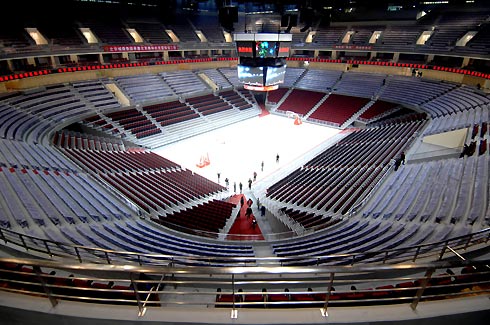Task 2
| Flats | Flat pieces of theatrical scenery which are often wooden frame covered with canvas, muslin or plywood, and painted with a picture of a scene. |
| Floor lay up | The process of preparing a stage floor. This often involves covering the existing floor with vinyl, carpet or masonite. |
| Hazards | Anything that has the potential to cause injury or illness or damage. http://www.thestagingcompany.com.au/ssl/cms/files_cms/TSC%20safety%20management%20plan.pdf |
| Knots | A variety of knots can be used in theatre for a variety of purposes such as hanging drapes and general rigging work. These include:
(see further down below on this page) |
| Manual handling | Using human force to move or support a load, including moving, lifting, putting down, pushing, pulling or carrying. http://www.safetyculture.com.au/work-method-statements/Manual_Handling_Procedure.php?gclid=CKWxv-3EmawCFaMF4god_CA8Pg |
| Occupational Health and Safety (OHS) | Procedures designed to keep employees, visitors and customers safe and accident free, healthy and secure while at a work place http://www.liveperformance.com.au/site/_content/document/00000027-source.pdf |
| Production personnel | Production personnel are the people directly involved with the staging of an event and may include: |
| Props | An abbreviation of the word ‘property’. These include items or articles used by performers or actors other than scenery and costumes. For example, a cigarette lighter carried in the actor’s pocket is a prop. |
| Set assembly | The process of putting together the set as required in the stage plan and mark up. This is also known as ‘dressing the stage’. |
| Set pieces | Set pieces may include:
|
| Stage area | The part of the stage the actors perform on that can be seen by the audience. http://en.wikipedia.org/wiki/Staging_area |
| Stage geography | The stage is divided into a number of sections, allowing the director to indicate where actors should position themselves or scenery be placed. They are:
|
| Stage machinery | Stage machinery includes fly systems (either electric or counter weight), trucks, revolves, traps, elevators and safety curtains. http://www.stageweld.com.au/machinery.htm |
| Stage mark out | This is the process of physically marking on the stage floor where scenery and props will be positioned. This is usually done with ‘mark up tape’. http://hsc.csu.edu.au/entertain/industry/core/staging/3459/mark_stage.htm |
| Stage plan | The stage plan is a diagram showing the layout of the stage including lighting bars, the proscenium arch, orchestra pit, stage wings and other fixtures. This plan is used as a template by the designers to plan individual productions. http://hsc.csu.edu.au/entertain/industry/core/staging/3459/stage_plans.htm |
| Stage types | There are a number of different types of stages. These include:
|
| Staging personnel | Staging personnel are the people directly working with the stage. They may include: |
Task 3
Types of Venues:
- Indoor and Outdoor Venues


Marking out the Stage:
Knots in Theatre:
- Bowline: Used to lift and support beams held up at a height

- Clove-Hitch: Used to attach ropes to beams, battens or posts at right angles.

- Half-Hitch: Use to attach ropes to bars or rope to a beam or post.

- Reef Knot: Used for tying the ends of a rope around a parcel, bandage or the neck of a sack
- Rolling Hitch: Used for tying one rope to another at a slopping angle. Used by campers to secure guy ropes around tent pegs.

- Truckies Hitch: Used as a rope tackle when a load needs to be tied down tightly. Best used with artificial rope.

- Overhand Knot: Used to stop the end of a rope going through a pulley and to stop the ends of a rope fraying.

- Figure of Eight Knot: Used to prevent the end of a rope going through a pulley.
- Whippings: Used to stop the ends of a rope from fraying.
- Rope Seizing: Used to bind ropes together or bind a rope to an object without damaging the rope



















